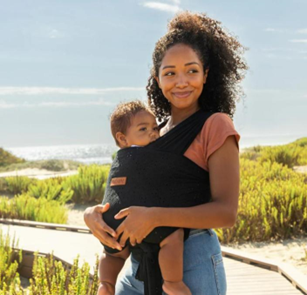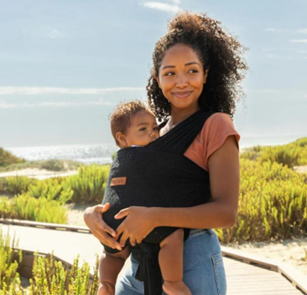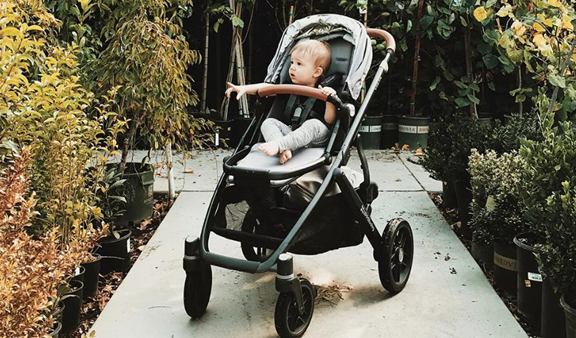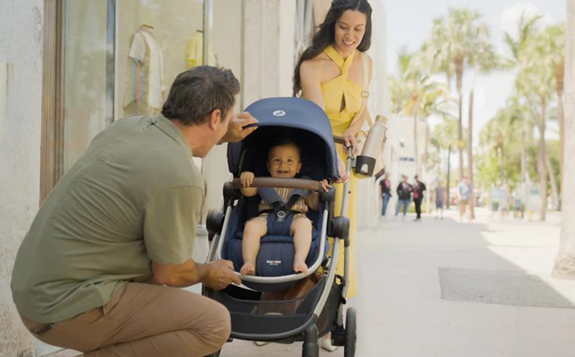Baby wrap carriers offer a wonderful way to keep your baby close while having your hands free. They provide comfort to both parent and child, promote bonding, and simplify daily tasks. However, how to use baby wrap carrier correctly is essential to ensure both safety and comfort. Navigating this can be challenging for new parents due to the variety of types and wrapping methods available. This guide will provide step-by-step instructions, safety tips, and advice on troubleshooting common issues. By mastering these techniques, you can ensure a secure and enjoyable baby-carrying experience for both you and your little one.
What Is a Baby Wrap Carrier?
A baby wrap carrier is a long piece of stretchy fabric that is wrapped around your body to securely hold your baby against you. Made from materials like cotton, bamboo, and blends, these carriers create a snug, supportive environment for your baby. Unlike structured carriers, wraps offer multiple tying techniques that can be adjusted for both the carrier and the baby’s comfort. Baby wrap carriers are versatile, suitable for use from birth through toddlerhood, and can accommodate different carrying positions, including front, back, and hip carries. The wrap molds to the baby’s shape, providing natural support for their developing spine and hips. With benefits like comfort, custom fit, and promoting bonding, baby wraps offer reassurance for both parents and babies.
How to Use a Baby Wrap Carrier: Step-by-Step Guide
Preparing the Wrap
Start by finding a flat surface or standing in front of a mirror. Spread the wrap out and locate the center mark, which usually has a tag or logo. This mark helps to ensure the wrap is evenly distributed. Hold the center mark against your chest, allowing the fabric to hang down equally on both sides. Take one end in each hand and bring them around your back. Cross the ends behind you, then bring them over your shoulders to the front, allowing the fabric to form an X on your back. Adjust the fabric to ensure it is not twisted and the tension is even.
Positioning Your Baby
With the wrap in place, it’s time to position your baby. Hold your baby high on your shoulder and guide their legs into the cross formed by the wrap in front of you. Make sure your baby’s legs are in an ‘M’ shape, with their knees higher than their bottom. Position the baby’s head close to your chest where you can easily tilt your head down and kiss them. This position is essential as it ensures the baby is close enough for you to monitor and promotes comfort for both of you.
Securing the Wrap
To secure the baby, pull all the slack and adjust the wrap firmly but gently so the baby is snug against you. After positioning your baby in the cross, pull the fabric from the shoulders towards the back diagonally to tighten it around the baby. Take the ends of the wrap, bring them down under your baby’s bottom, and cross them. Bring the wrap back around your waist to the front and tie a secure knot. Make sure the fabric is spread wide to distribute the baby’s weight evenly and provide support. The wrap should feel tight enough to hold your baby securely in place, but not so tight that it restricts their movement or breathing.
Safety Tips for Using a Baby Wrap Carrier
Following the T.I.C.K.S. Guidelines
Safety should always be a top priority when using a baby wrap carrier. Follow the T.I.C.K.S. guidelines to ensure your baby is secure:
• Tight: The wrap should be tight enough to hold your baby close to you without any slack. Loose fabric can cause the baby to slump, which can impede their breathing.
• In view at all times: Your baby’s face should be visible to you at all times without having to move the fabric or yourself to see them.
• Close enough to kiss: Always position your baby close enough to your chin that you can easily kiss the top of their head.
• Keep chin off the chest: Ensure that there’s enough space to insert at least one finger under your baby’s chin. Their chin should never be pressed against their chest as this can obstruct their airway.
• Supported back: The baby’s back should be supported in a natural, slightly curved position. The fabric should be tight enough to hold them in this position so they cannot slump down.
Regular Monitoring
Even with the wrap secure, it’s important to regularly monitor your baby. Check their position and make sure they are comfortable and their airways are clear. If your baby appears to be in distress or uncomfortable, readjust the wrap immediately. Furthermore, always be mindful of your surroundings when carrying your baby. Avoid bending at the waist to prevent the baby from slumping. Instead, bend at the knees if you need to pick something up. Regularly check the wrap’s condition for any wear and tear that could affect its integrity.
Practicing these safety tips will make your baby wrap experience comfortable, enjoyable, and safe for both you and your baby.

Troubleshooting Common Issues
Baby Slipping in the Wrap
If your baby is slipping, it’s usually because the wrap is too loose. Make sure you pull the fabric tight while securing your baby. Readjust the tension and make sure the baby is positioned correctly with their legs in the ‘M’ shape and the fabric spread wide to provide adequate support.
Discomfort for the Parent
Discomfort often stems from improper positioning or uneven distribution of weight. Ensure the wrap is spread evenly across your shoulders and back. Adjust the fabric so it is not twisted and the weight of your baby is evenly distributed across your body. Consider trying different carrying positions to find the most comfortable one for you.
Baby’s Head Not Supported
Head support is crucial, especially for newborns. Ensure the fabric near the baby’s head is pulled up to support their neck. If the wrap doesn’t feel supportive enough, use a rolled-up blanket or a baby head support pillow to provide additional stability. This will ensure the baby’s head stays in a safe, secure position during use.
Conclusion
Using a baby wrap carrier can be an excellent way to bond with your baby while keeping them close and secure. By following a step-by-step guide on how to use baby wrap carrier, adhering to safety tips, and understanding how to troubleshoot common issues, you ensure a positive experience for both you and your baby. Proper use involves careful preparation, correct positioning, and constant monitoring, wrapped in an awareness of your baby’s comfort and support needs. Embrace the journey and enjoy the closeness and convenience a baby wrap carrier provides. Remember, practice makes perfect, and soon you’ll be carrying your baby with confidence and ease while mastering how to use baby wrap carrier effectively.
FAQs
Can I use a baby wrap carrier for a newborn?
Yes, baby wrap carriers are suitable for newborns. Ensure you follow the T.I.C.K.S. guidelines and provide adequate neck support. Newborns need extra care to support their head and neck, but the closeness and security of a wrap can be very comforting for them.
How do I know if the wrap is too tight?
The wrap is too tight if it restricts your baby’s movement or breathing. You should be able to slide a hand between your baby and your chest. It should hold your baby securely without pressing too hard against them.
Can I breastfeed while using a baby wrap carrier?
Yes, many mothers find it convenient to breastfeed while using a baby wrap carrier. Ensure the baby is correctly positioned and has a clear airway. You may need to loosen the wrap slightly and adjust it for comfortable feeding, then retighten it afterward.





